Socomec Electric meters
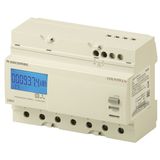
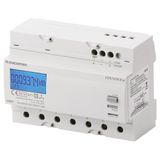
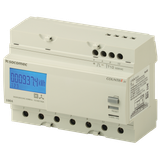


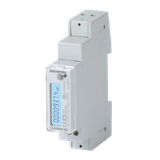
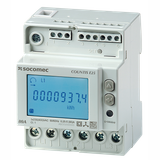
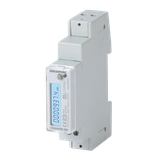
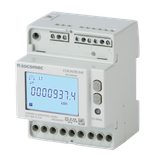
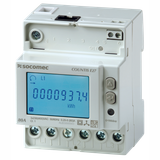

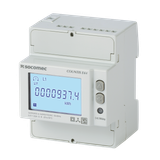
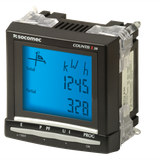

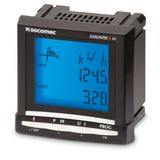
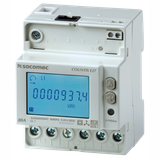
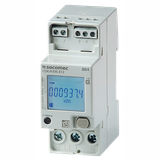


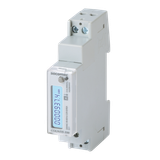
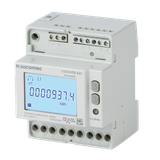

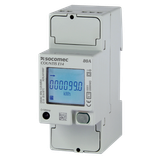
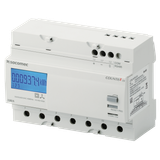

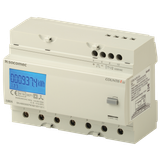
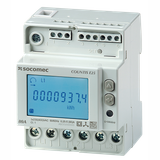
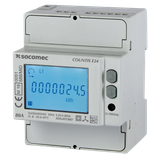

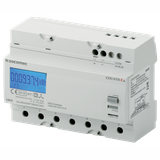
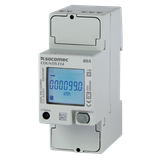
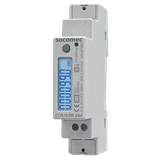
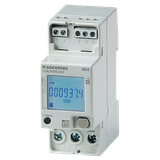
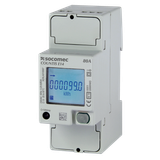
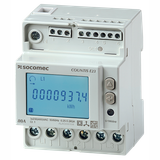



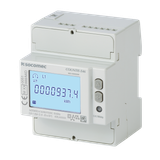
socomec electric meters metrology brief
In switchboards that sit near UPS, ATS, and high-crest-factor loads, measurement must stay repeatable when waveforms are less than perfect. These meters cover direct-connected finals and CT/VT-fed feeders from 63 A up to multi-MW incomers. Accuracy classes typically land at Class 0.2S/0.5S for active energy on CT inputs and Class 1 for direct connect, with reactive at Class 1/2. Typical operating windows: 230/400 V AC (45–65 Hz), −25…+55 °C, IP54/IP65 for enclosed fronts, and surge immunity per IEC 61000-4 series so readings don’t wander during switching events.
socomec power analyzers range architecture
The portfolio splits into compact DIN 96×96 panel meters for feeders, modular rail units for dense boards, and multi-circuit modules that sample several branch circuits from a single head. Expect 3-phase 3/4-wire topologies, Rogowski-coil compatibility on some frames for fast retrofit, and logging options (rolling 15-min load profiles, min/max capture, alarms). Harmonic analytics typically extend to the 31st–63rd order with per-phase THD, unbalance, and demand calculation that matches how facilities settle capacity charges.
socomec digital energy meters interfaces and I/O
Communications come in familiar flavors: RS-485 Modbus RTU, Ethernet Modbus/TCP, optional BACnet/IP for BMS, and M-Bus where AMR is standard. Pulse outputs (SO), digital inputs for tariff or breaker status, and relay outputs for demand alarms are common. CT inputs accept 1 A/5 A; some units add mV inputs for Rogowski sets. Voltage inputs tolerate 277/480 V L-L on industrial boards; VT scaling handles MV feeders. Sampling is true-RMS on nonsinusoidal signals with 200–512 samples/cycle class devices. Timekeeping uses RTC with battery back-up; when Ethernet is present, NTP keeps multi-meter fleets aligned so interval data lines up with utility logs.
socomec monitoring devices applications by sector
Commercial buildings use feeder metering and sub-metering to allocate cost per tenant or per floor. Hospitals track theatre, imaging, and HVAC loads separately, often with tariff inputs to distinguish day/night billing. Data centres monitor A/B paths and branch circuits to maintain rack-level PUE views. Manufacturing benefits from high-speed snapshots around VFD banks to spot unbalance and low power factor before it trips upstream protection. Where billing is contractual, MID/EN 50470 compliant socomec consumption meters are chosen for tenant invoicing; elsewhere, engineering-grade frames focus on analytics and alarms.
Technical specifications and standards that steer design
Energy accuracy follows IEC 62053-22/24 (active/reactive) and IEC 62052-11 for general requirements; power-quality parameters reference IEC 61557-12 performance classes. For billing in the EU, look for MID conformity to EN 50470. Electromagnetic compatibility sits under EN 61326/EN 61000-6-2/-6-4; safety under IEC/EN 61010-1. Auxiliary supplies span 24 V DC and 85–265 V AC in many models; specify one range per panel to simplify spares. On direct-connect SKUs, terminals commonly accept 16–35 mm² copper; torque windows are printed on the bezel to keep contact resistance low in warm risers.
Integration with switchgear and software ecosystems
Tie meters to upstream disconnectors and protection so maintenance can isolate without losing data—auxiliary supplies should ride on the panel control circuit. With UPS or generator changeover, freeze counters during source transfer to avoid phantom spikes in demand logs. For DIRIS gateways and third-party BMS, map Modbus registers once and publish a tag list; most socomec electrical measurement instruments share register conventions across a family, which keeps commissioning predictable. Where SPDs sit nearby, keep metering VT leads short and twisted; long unshielded runs can mimic events and pollute PQ dashboards.
Selection logic for B2B tenders and retrofits
Start from the purpose, then lock the signal path.
- Billing vs diagnostics: specify MID when invoices are issued; otherwise prioritise analyzers with harmonics, unbalance, and demand tracking.
- Topology and current sensing: direct connect for ≤63–125 A; CT 1/5 A for feeders; Rogowski where access is tight or shutdowns aren’t possible.
- Coms stack: Modbus RTU for simple chains, Ethernet with Modbus/TCP or BACnet/IP for modern BMS, M-Bus for utility integration.
- Logging depth: choose onboard memory sized to your export cadence; daily CSV or SCADA polling needs different retention.
- Mechanical: rail pitch, terminal orientation, and display visibility from the aisle matter more than spec sheets admit.
Where documents shorthand the package as socomec energy meters, make the CT class (0.2/0.5), ratio, and burden explicit on the drawings so accuracy doesn’t collapse at low load.
Practical deployment and cross-brand fit
In mixed panels with MCB rows and transfer gear, route VT/CT secondaries away from high-dI/dt paths, and bond shields at one point to avoid ground loops. When pairing with ATyS transfer systems or UPS maintenance bypasses, align meter demand windows with site billing intervals to keep penalties predictable. For tenant projects, multi-circuit heads reduce footprint and cabling hours. If the spec calls out a “network of socomec circuit protection devices with metering,” reserve space for shorting blocks and test plugs so CT work is safe and repeatable.
Advantages of working with Bankoflamps
We map each feeder and sub-feeder to a meter type, CT class, comms option, and logging profile so your board schedules become a clean BOM rather than a guess. Live EU stock is visible per warehouse before crews are booked. Quotes typically arrive in about an hour with EAN/MPN, CT/VT notes, wiring schematics, register maps, and panel cut-out guidance. Orders go in by manufacturer code; downloadable price lists carry validity windows that hold through phases. We track lead times and shipment legs, consolidate by site and zone to reduce off-loading time, and provide purchase-history analytics. Approved accounts can work with post-payment up to 30 days across France, the Baltics, Germany, Spain, Italy, Belgium, and the Netherlands.